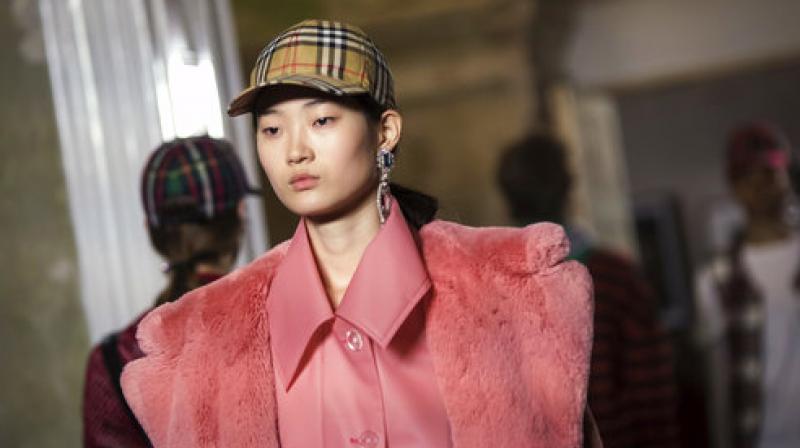
Global movements have had a significant impact on Indian fashion, blending international influences with local traditions to create unique and dynamic trends. Moreover, in today’s context where digitization had unified the world negating geographical boundaries and often cultural ones too. Here are few predominant topics that are increasingly the buzz in India:
Sustainable Fashion Movement: This movement which started as an elitist dialogue to now becoming a normalized ‘urgency driven’ debate, has birthed multiple retail and fashion trends within the country. Championed by the youth, propagated by the Millennials and debated by the Gen X, the sustainable movement is making significant strides in the Indian fashion industry, reflecting a growing awareness and commitment to environmental responsibility. As consumers become more eco-conscious, there is a noticeable shift towards slow fashion, emphasizing quality over quantity and valuing timeless pieces over transient trends. Indian designers and brands are increasingly incorporating organic fabrics, natural dyes, and traditional handloom techniques, promoting the rich heritage of Indian craftsmanship while reducing the carbon footprint. This movement also highlights the importance of ethical production practices, ensuring fair wages and safe working conditions for artisans. The rise of sustainable fashion in India is not only preserving traditional skills but also fostering a more mindful consumer culture, where the story behind each garment is as valued as its aesthetic appeal. As a result, the Indian fashion landscape is evolving to normalize sustainability, creating a harmonious blend of innovation, tradition, and environmental stewardship.
Eco-Brands: Rise of eco-friendly and sustainable fashion brands in India, such as those using organic cotton, natural dyes, and adopting slow fashion as their design ethos.
Artisanal: Increased emphasis on authentic representation of Indian heritage in fashion, with designers collaborating with local artisans and promoting traditional crafts, but with a renewed design led approach.
Re-use: Rise of online thrift stores, that echo the sentiments of the youth as well as their wallets.
Recycle & Upcycle: Adoption of climate-conscious fashion practices in India, including the use of recycled materials, ethical production methods, Multiple retailers, brands and manufacturers have pledged a significant percentage of manufacturing to be borne from recycled or upcycled yarns, as a choice material in seasonal fashion.
Inclusivity Movement: The global inclusivity movement resonated with the Indian youth the fastest and is profoundly reshaping the Indian fashion industry, ushering in a new era of diversity and acceptance. As digital natives, the youth were born into a world of many cultures, leaving them struggling to find their footing in an overwhelming landscape. Championing the representation of various body types, ages, genders, and ethnicities, the movement has encouraged Indian fashion to break away from conventional beauty standards and embrace a more comprehensive and realistic portrayal of society. Indian designers and brands are increasingly showcasing diverse models on runways and in campaigns, highlighting the beauty of different skin tones, body shapes, and cultural backgrounds. This shift is not only transforming aesthetic norms but also fostering a more inclusive and empathetic fashion community. Additionally, the inclusivity movement is inspiring innovative designs that cater to a broader audience, including adaptive clothing for people with disabilities and gender-neutral collections. The impact is evident in the growing popularity of campaigns that celebrate individuality and personal expression. As a result, the Indian fashion industry is becoming more reflective of its diverse population, promoting equality, and setting a powerful example on the global stage.
Gender Equality and Inclusivity: Emergence of gender-neutral collections and unisex clothing lines from Indian designers, challenging traditional gender norms in Indian fashion.
Body Positivity Movement: Greater representation of diverse body types in Indian fashion campaigns and runway shows, promoting plus-size clothing and inclusive sizing.
Black Lives Matter (BLM) Movement: Increased visibility of Indian designers and models with darker skin tones, breaking down colourism in the fashion industry and celebrating diversity. Including drawing attention to the horrors of the persisting abuse and persecution of Adivasis and Dalits in the country with slogans like #dalitalivesmatter and #brownisbeautiful.
LGBTQ+ Rights Movement: Celebration of LGBTQ+ culture in Indian fashion through vibrant, bold fashion choices and the emergence of Pride-themed collections that embrace diversity and self-expression.
Feminism: Empowering fashion that promotes women’s rights in India, with designs incorporating feminist slogans, power dressing, and functional attire for modern women. One such recent occurrence is the “Office Siren” trend presently echoing within the country as well.
Sneaker Culture: The sneaker culture movement is revolutionizing Indian fashion, infusing it with a fresh, dynamic, and youthful energy. Originally rooted in Western streetwear, sneaker culture has gained immense popularity in India, driven by a growing affluence amongst the urban youth. This movement has transcended mere footwear, becoming a powerful symbol of self-expression, status, and identity. Indian fashion enthusiasts, particularly the younger generation, are embracing sneakers as essential style statements, integrating them seamlessly into traditional and contemporary outfits alike. The rise of sneaker culture has led to collaborations between Indian designers and global sneaker brands, resulting in unique, limited-edition collections that blend local craftsmanship with modern design sensibilities. This cultural shift is also influencing the retail landscape, with dedicated sneaker stores, reselling platforms, and sneaker conventions emerging across the country. Furthermore, the sneaker movement is fostering a sense of community among aficionados, uniting them through shared passions and exclusive drops. As sneakers become a central element in fashion-forward wardrobes, they are democratizing style and breaking down traditional fashion barriers, making Indian fashion more eclectic, inclusive, and globally connected.
To sum it up, as long as we are globally connected, global movements will continue to impact indigenous fashion, as the world is increasingly facing similar environments and cultural conundrums. While some impacts seem more superficial like the increasing the office siren trend, the true movement is the ‘why underneath’ and how digital connections are helping consumers from across the world forge strong empathetic relationships with each other.
By Anuradha Chandrashekar, Co-founder, ICH NEXT.
